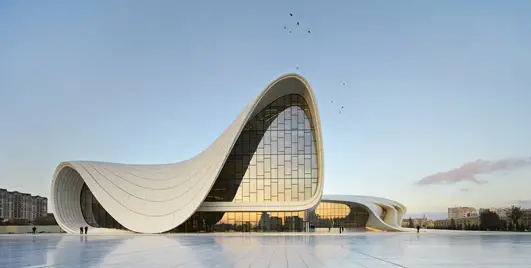Living Patterns, Healthy Design Solutions, Global Architecture, Building Design Emotions
Living Structure Comes From Patterns
Architectural Structure & Appearance – article by Nikos A. Salingaros
21 Aug 2015
Living Structure Comes From Patterns, Part 2 – Building Design
Living Structure Comes From Patterns : Article Part 2
By Nikos A. Salingaros
Living patterns document healthy design solutions
An environment that embodies living structure allows people to live life more fully, encouraged rather than inhibited by architecture. Freed from anxiety and the feelings of unease induced by hostile buildings, spaces, and surfaces, positive emotions are allowed to blossom on the basic level of our subconscious. A building designed with sufficient attention to the natural rhythms of human neurobiology can result in conscious joy. Think of how the tectonics of the human body, mere surface physical appearance (occasionally augmented by a glance), can trigger sexual excitement — or not. Many are the examples of how physical form, properly attuned to natural structure, can evoke a human response everywhere along the continuum of conscious to subconscious emotion (Salingaros, 2015).
The architectural theorist Christopher Alexander and others have put considerable effort into cataloguing design patterns that resonate with and actualize people’s humanity. Living patterns free people from environmental stresses that come from an incoherent geometry of objects and spaces. Architecture’s capacity to protect us from stress liberates us to be more fully human, and also keeps us healthy in the long-term.
Living patterns represent structures of useful constraint underlying all successfully evolved design solutions. Generations of people, building up their surroundings by trial and error, discovered configurations that made them feel healthy both physiologically and psychologically. Living patterns arose through the evolution of built form, a long process of selection arising from thousands of experiments. The choice of a healthy architectural solution over other possibilities uses feedback to identify a state of increased wellbeing leading to long-term health. This process is the same as in genetic programming, where a piece of “software” evolves after millions of iterations, with variants continually selected and re-selected so the result performs the required task optimally (Leitner, 2015).
Most living patterns documented by Alexander in A Pattern Language (Alexander et al., 1977) were derived from looking at solutions that unify the user within his or her immediate environment. The main criterion for selection was the healing experienced when a pattern is successfully applied to constrain — that is, to identify useful limits to — a design. The mind-set in which this phenomenon is recognized and appreciated considers human beings interacting with their surroundings strongly enough to affect their health. A living pattern is meaningless, however, in a mind-set that treats buildings as sculptural objects interacting naturally with neither their users nor their surroundings.
Successfully evolved design solutions lie embedded in traditional architectures. The functional correctness of living patterns considered as a set of design constraints depends on their widespread occurrence globally. The proof is in their re-discovery among people isolated from each other in geographically separated societies. Everything else in those cultures may be totally different, but since the human body is more or less the same all over the world, socio-geometric solutions for a particular design problem ought to obey identical constraints — and they do! The sense of wellbeing generated by a living socio-geometric pattern is shared across distinct times and cultures.
Extracting patterns from observations
Since life-enhancing patterns recur in traditional buildings, some people assume that a living pattern is merely a design solution that has been used repeatedly. But that’s not necessarily so. Many repeating design typologies are expedient for some purposes, but do not enhance human life in any way. A design template may be widely adopted because it is very cheap, industrially efficient, or because it serves the interests of some group — but it doesn’t lead to a healing environment for its users. In many cases, it could actually degrade the living qualities of the environment.
An enlightened approach to healthy design therefore requires a catalogue of tested living patterns for handy reference. Such a list would help to avoid confusing them with repeating inhuman typologies that are not alive.
One list already exists in A Pattern Language (Alexander et al., 1977). Yet how do we document other living patterns from existing buildings and urban fabric? Extracting patterns from traditional practice and deriving totally new patterns both require judgment. The following help explain how to observe a pattern in design (Salingaros, 2005: Chapter 8):
- Living patterns usually work together as a group, and are rarely isolated.
- Some appear in a weak form: we need to find the strongest example.
- Patterns organize complexity and are not found in simplistic environments.
The complexity of the best, most humanly adapted living configurations, which solve more than one design problem simultaneously, is high. A setting that has positive effects on the user’s wellbeing probably has several patterns working together to satisfy a combination of system dynamics (some of which are not obvious). A researcher trying to document patterns must first disentangle them from one another. As in most scientific research, you first detect known patterns; what is left contains the new patterns. This discovery process is necessarily sequential, and cannot be achieved all at once.
Then, one may discover a set of similar but distinct solutions to a specific design problem whose common features identify them as possible living patterns. Suppose each related application shows undeniable healing effects on the user. But which particular constraint is the archetypal pattern? A choice among several variations of a common theme must be made. The optimal living pattern is the most “wonderful” — the one that works best, that gives the most healing feedback, that makes a user wish to experience its implementation as much as possible. Obviously, this singular living pattern will be difficult to locate. An architect must learn to identify them, and then design a solution that takes advantage of the mutual adaptivity arising from the ordered complexity common to living patterns.
An archetypal living pattern must deliver the strongest and most positive effect on human health and comfort for that particular circumstance. That way, it can reproduce the same healing effect when built into something new. Competing forces of expediency, fashion, short-term economy, or misguided architectural codes and zoning laws are likely to dilute a pattern in many of its applications. Finding a living pattern requires looking for the best possible built example, like a collector searching for the best seashell or antique coin specimen. This process of discovery presupposes experience, and a highly tuned sensitivity to healing environments.
Inventing new patterns
A socio-geometric pattern can be invented, of course, and is not limited to what is observed as already built elsewhere. The architect or urbanist has full freedom to propose a new pattern as a conjecture based upon experiments and intuition. The hard task is its verification: the living pattern must enhance human life whenever it is used. Otherwise, it is just a design whim with no healing potential, and it could even seriously degrade the psychological qualities of the built environment. A new pattern must pass a rigorous set of tests and trials, preferably with full-scale models and mock-ups, before it is built.
Another point is a supposedly new pattern’s overlap with existing patterns: after the continuous emergence of thousands of living patterns over millennia of human building, we can’t expect any novel pattern to be a total break from the past (Salingaros, 2005: Chapter 8). And it is the user — not the architect — who decides when a living pattern, old or new, has been implemented successfully. An invented design pattern can be called a “living pattern” only if it clearly enhances the life of its users. It will take repeated implementations to decide whether it works well or not. Even so, an architect should be careful when transferring a new pattern to another project, just in case its success is due to local rather than universal factors.
The following summarize the requirements for deriving new living patterns:
(i) A pattern is very easy to propose, but it requires extensive testing before it can be adopted for use.
(ii) A living pattern has to significantly enhance the wellbeing and lives of users who experience it directly.
(iii) It is expected that any new pattern will connect to existing patterns; otherwise there is something wrong with it.
(iv) A proposed design scheme that draws attention to itself, or to the ego of its designer, is most probably not a living pattern.
(v) A living pattern acts on our subconscious: it frees us from environmental stress, even if we never notice it.
Coming up with new living patterns is an essential part of innovative design that is reliably adaptive. Students and practitioners should first learn to work with the original set drawn from Alexander’s Pattern Language, and then explore other pattern lists compiled afterwards. Finally, they should try their hand at creating innovative patterns needed for a project at hand. Even though each design problem is necessarily specific, the living pattern has to be general. Guidelines for comparable discovered patterns are available in the literature of computer science, where new patterns are being written all the time (Leitner, 2015).
Patterns are basic tools for organizing complexity — without erasing it. They are used in all fields by those who study and build complex systems of all kinds. Their usefulness was proved in the 20th Century after designers and planners oversimplified forms in the fields of architecture and urbanism. They believed that abstract forms rendered tools used to organize complexity obsolete. The discipline as a whole became reductionistic (Bhat & Salingaros, 2013). Practitioners learned to ignore the complaints of users, and users have had to learn to numb themselves to the work of practitioners — a sadly necessary defense mechanism amid a deteriorating built environment. Practitioners are no longer trained to tackle complexity: they invariably think in terms of non-adaptive simplistic situations.
Patterns as design constraints
Living patterns contribute to successful design solutions. But an architect cannot just pop a living pattern into a building design and expect it to work without any relation to a coherent organizing principle. Inserting living patterns into a rambling, incoherent building will not fix its rambling, incoherent design. Living patterns reinforce each other, and they need to be embedded in an interrelated web of adaptive structure. They are not a quick fix-it for bad design.
Alexander’s The Nature of Order (Alexander, 2001-2005) correctly understands such patterns as constraints in a sophisticated system of computational design. One chooses from among an infinite number of generated options that satisfy an interrelated group of patterns. All of these solutions are adaptive. The more constraints one imposes, the narrower the set of good solutions. The design process may include adaptive constraints such as climate, site, orientation, interaction with the environment and surrounding structures, etc.
Architects trained in mainstream practice claim to reject design constraints of any sort. They are intoxicated with the promise of absolute power to control human lives by determining the shape and dimensions of the spaces in which people will live and work. Architects expect to indulge themselves freely, exerting personal will on the environment. Not surprisingly, they react to the idea of living patterns with apprehension.
Architects believe that they possess an awesome and incredible power, based on pure whim, to decide exactly how people will use their buildings. They don’t! The myth of the architect’s absolute and total control over the user’s life is a cruel and dangerous fantasy. Human nature reacts against willful impositions (Salingaros, 2015). People are enticed, not forced, to use spaces and paths whose design makes them feel comfortable; they must be compelled to use spaces and paths that fail to generate such positive feelings. Or they will avoid hostile environments altogether. Such matters are rarely if ever considered prior to construction. Will a design function the way its architect naively expects? The answer —yes or no — depends upon the living patterns embedded within its design.
Moreover, the most paradoxical (and also most embarrassing) aspect of conventional design is never mentioned. The creative freedom permitted in contemporary architecture is dictated by trendsetters, power brokers, and influential critics, and is therefore severely constrained: infinitely more than the constraints implied by living patterns. For decades architects have been allowed to create anything except what has the qualities of living structure. This restriction is socialized into architectural education and in media coverage of architecture. Indeed, the architect can violate living patterns, producing an architecture whose primary result is a violation of nature.
Shouldn’t architects be creating healing environments?
When people complain that the environment makes them feel uncomfortable, they are dismissed as “old-fashioned” or “unappreciative of contemporary design”. But ordinary people’s reactions are in fact correct. Only architects and other design professionals, after years of conditioning in architecture school, are able to override deeper instincts telling them that a structure is hostile. Architects have long used formal criteria to design and build structures that do not accommodate human sensibilities. They are taught to judge by their own lights and to treat criticism by the public as a feather in their caps.
The root cause of profound disagreement between trained architects and the common people on architecture boils down to whether a design embodies living structure. Reconciliation on this point is impossible. Architects who call for more education of the public so that it will love the same buildings they love do not understand human nature.
We could change our design criteria and adopt a set of mechanisms shared by all “living” creations. If the design of a city, a neighborhood, a plaza, a building, a room, or a window shares these living qualities, then we can be fairly sure the built structure will work well for its users. The criteria for success are both practical and psychological: the created form and space are adapted to the human function they aim to accommodate, and they make people feel comfortable rather than stressed. This network of sensations acts subconsciously. A positive emotional reaction is not usually noticed because it is largely instinctive, aligning with human neurobiological response, yet it leads to a healthy state. But a negative reaction to an unnatural form and space triggers shock and anxiety.
Our body is warning us of danger in the environment.
The difference between natural and artificial is fundamental. The act of building is a man-made transformation of the natural environment, an imposition on nature necessary for human habitation. The process of assembling architectural and urban form, along with its underlying geometry, can differ radically: either it is inspired by and sympathetic to natural processes, or it is deliberately opposed to them. Architecture and planning that use unnatural methodologies will inevitably conflict with nature. Often, forms that rely upon innovation as their inspiration reap acclaim for their architects. Unfortunately, structures that conflict with the processes of nature are ultimately unsustainable.
Yet in most contemporary architecture, innovation is based strictly on visual appeal. Traditional design approaches, however, are utilitarian. Their processes and forms arose over generations by selection among natural alternatives, hence they are more sustainable. They use evolved energy-saving solutions for building — factoring in local climate, local materials, and knowledge of local customs to determine, by trial and error, the most effective designs. Taking this more scientific approach, we can dependably solve more problems of sustainability and human health. Some environments soothe and heal, whereas others induce anxiety and illness. By rejecting practices based on science and utility, architects have opened a deep and perilous gulf between innovation that celebrates an abstract image and innovation that provides a healing environment.
To force the public to put up with dysfunctional, unhealthy design solutions is not an accomplishment that architects should be proud of. The design professions must break out of their conventional thinking and embrace living patterns in their work if they want to help reconstitute what every human deserves: a healing environment (Salingaros, 2015).
Why living patterns are not applied today
For much of the twentieth century, mainstream architects were concerned primarily with applying formal design criteria having to do with severe and simplistic forms, and focused on the exclusive use of industrial materials such as plate glass curtain walls, etc. Those typologies and design rules have an opposite goal from living patterns, which seek human well-being and health through adaptive geometry.
In a new human-oriented design paradigm that relies on useful interaction among the elements of architecture, a building’s image and form are not the top concern. Architects today equate humans with “scalies” — human figurines available in CAD design programs and placed artistically to “humanize” otherwise sterile renderings. That’s phony, and fools the client, often pumping fresh air into a project that turns out to be dead on arrival. Let the architect instead ask: “Will any real person actually want to sit, stand, or walk right there, on that spot where we see happy and smiling figures?” This is the key to predicting actual uses, and it depends on living patterns.
Simple forms — the opposite of design patterns that embody ordered complexity — are widely used as non-adaptive design prototypes. They represent the most rigid type of design constraint. They are divorced from human life. Our world today is dominated by such typologies promoted by an ideology linked to industrial materials. These typologies were declared “healthy”, “socially liberating”, and “the design of the future” long ago by self-anointed “experts”. Society repeated these shibboleths without ever asking whether they work or not. They have obviously failed to achieve whatever marvelous effect was promised. But many with evident self-interest desperately wish to continue to believe in non-adaptive typologies that have no healing effect on the user.
The continuing dominance in design of minimally-satisfactory and even unhealthy typologies contradicts the process of historical selection that normally would favor the healthiest living patterns. How is this so? Selection stopped after nobody was allowed to test design variants! The reason that unhealthy design typologies thrive all over the world is because they have been institutionalized. Once non-adaptive design typologies become established, convention and regulations decree what designers are allowed to use. Society gets used to hostile spaces and urban dysfunction, and cannot imagine anything different. People accept an unhealthy status quo, ignoring direct physical evidence that demolishes false promises now almost a century old.
So long as practitioners, professional groups, the media, and academia all consider buildings primarily as isolated sculptural objects, attempts to introduce living patterns into the design of human habitat will be extraordinarily difficult and frustrating. When, at last, enlightened clients, public or private, learn the benefits of a healing environment, they will demand it from architects — who will discover an incentive to know how it can be delivered. The new defining paradigm of our technological society is connectivity, not isolation. This is where living patterns come in. Future trends must and will reflect the essential healing connection between people and their environment.
Readings:
Christopher Alexander (2001-2005) The Nature of Order, Books 1-4, Center for Environmental Structure, Berkeley, California. Book 1: The Phenomenon of Life, 2001; Book 2: The Process of Creating Life, 2002; Book 3: A Vision of a Living World, 2005; Book 4: The Luminous Ground, 2004.
Christopher Alexander, S. Ishikawa, M. Silverstein, M. Jacobson, I. Fiksdahl-King & S. Angel (1977) A Pattern Language, Oxford University Press, New York.
Ramray Bhat & Nikos Salingaros (2013) “Reductionism Undermines Both Science and Culture”, New English Review, March.
Helmut Leitner (2015) Pattern Theory, CreateSpace, Amazon.
Nikos A. Salingaros (2005) Principles of Urban Structure, Techne Press, Amsterdam, Holland; reprinted 2014, Sustasis Press, Portland, Oregon and Vajra Books, Kathmandu, Nepal. Chapter 8: “The Structure of Pattern Languages” was originally published in arq — Architectural Research Quarterly, Volume 4 (2000), pages 149-161.
Nikos A. Salingaros (2015) “Biophilia and Healing Environments”, ten-part series in Metropolis, available here.
Living Structure Comes From Patterns information from Nikos A. Salingaros
Living Structure Comes From Patterns, Part 1
Location: UK
Architecture Articles – Selection
Real Synthetic Architecture : article by Brian Carter

photograph : Hufton + Crow
Architectural Narrative : article by Trevor Tucker
Old World / New World Architecture : article by Brian Carter
Walt Disney Concert Hall, Los Angeles, California, USA
Weisman Art Museum, Minneapolis : Frank Gehry
New York State Architecture Designs
Comments / photos for the Living Structure Comes From Patterns, Part 2 Article page welcome








